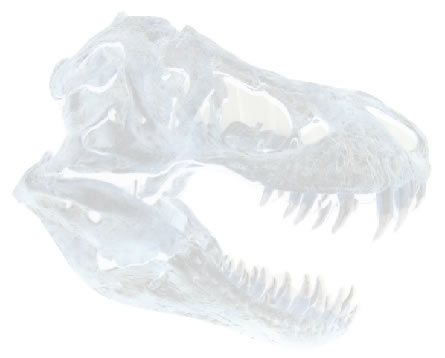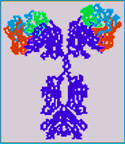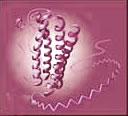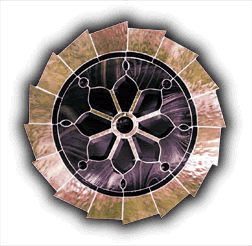 |
||||||||||
Date: June 20, 2026
by Chaya Venkat
Related Articles:

The latest issue of the journal "Leukemia" has a scary article that reports unexpectedly high hematological toxicity, serious infections and even death, following therapy with Campath + G-CSF. The story just goes to show that it is no slam dunk predicting the results one will get with drug combinations. That is why we need the research and the clinical trials. We are grateful to the Ohio State research team for their rapid publication of these disturbing results. Good news is sexy and every one likes a winner. But rapid publication of unexpected problems and toxicity saves lives by giving us and our doctors a very important heads-up.
Campath (also known as alemtuzumab) is a powerful and very valuable monoclonal antibody in our arsenal against CLL. It is one of the few drugs that works in patients with "Bucket C" cytogenetics with the poor prognosis 17p (p53) deletion, as well as those who have become refractory to fludarabine therapy. Chances are pretty good that the majority of us will have to use this drug at some point or the other in our battle against CLL. (Campath - Looking Better and Better; Hitting a Home Run with Campath Consolidation; Good News for the Tough Cases). We all share an interest in seeing better combinations of this drug, better ways of using it.
 |
 |
Alemtuzumab |
Pegfilgrastim |
It has long been recognized that Campath carries with it a stiff penalty of immune suppression and hematological toxicity that includes drastically reduced T-cell function that takes a long time to recover, as well as neutropenia and thrombocytopenia (reduced neutrophil and platelet counts, respectively). T-cells, B-cells, neutrophils and macrophages are among the most important parts of our immune system. Campath does a pretty good job of killing B-cells, but it is a pity that T-cells and neutrophils are destroyed as well during Campath therapy. Monocytes, precursors of macrophages, are also targeted during the open warfare declared in your body during Campath therapy. Each of these cell lines expresses CD52, the marker that is tagged for killing by Campath. No wonder patients are often at risk of infections. Old enemies such as CMV (cytomegalovirus), hepatitis, herpes etc., get their chance for reactivation. These viruses lie dormant in most of our bodies waiting for an opportunistic moment and any and all of them may dare to come out and play while our immune systems are out for the count.
Here is the million dollar question: is there something that can be done to improve the odds in our favor and give patients an improved level of immune protection before undergoing Campath therapy? Preventing neutropenia sounds like a good thing to do. A miracle breakthrough in recent years is our ability to manufacture G-CSF (Granulocyte Colony Stimulating Factor), a synthetic analog of the cytokine that is made by our bodies. This growth factor signals the body to flush out neutrophils from the bone marrow into the blood stream, as well as get started making new baby neutrophils from scratch.
Administering G-CSF (brand names "Neupogen" and “Neulasta”, general name "filgrastim") causes a big spurt in the numbers of neutrophils out in the blood, trolling around and looking for dangerous pathogens to kill. At a time when all of the immune system cells in the blood are taking a beating due to Campath therapy, it sounds like a good idea to co-administer G-CSF to keep up the neutrophil counts. You with me so far? The logic sounds pretty good to you, right? The results of this Campath + G-CSF trial are compared to an earlier trial using just Campath as a single agent, in a similar cohort of patients. The expectation was that addition of G-CSF will do away with some of the opportunistic infections, hematological toxicity and improve things all around. Right?
Wrong!
Given below are the abstracts of both the studies. Do write if you want help locating the full texts of either article, it is an important comparison and one that might make you think twice before you push your local oncologist to give you Neupogen along with Campath. In fact, Byrd, et. al., are quite clear in their caution, don't try this combo on your own, outside of well monitored clinical trials.
Leukemia. 2026 Apr 28; [Epub ahead of print]
Filgrastim and alemtuzumab (Campath-1H) for refractory chronic lymphocytic leukemia.
Lin TS, Flinn IW, Lucas MS, Porcu P, Sickler J, Moran ME, Lucas DM, Heerema NA, Grever MR, Byrd JC.
The Division of Hematology-Oncology, The Ohio State University, Columbus, OH.
Alemtuzumab (anti-CD52; Campath-1H) is effective in fludarabine-refractory chronic lymphocytic leukemia (CLL), but is associated with infection and early onset neutropenia. To reduce toxicity, filgrastim (G-CSF) was administered concurrently with alemtuzumab. In total, 14 CLL patients (median age 59) with a median of 3.5 prior regimens (range 1-12) received i.v. alemtuzumab, stepped up from 3 to 30 mg the first week, then 30 mg thrice weekly for 12 weeks. Filgrastim 5 mug/kg was administered daily 5 days before and throughout alemtuzumab therapy. Six patients developed cytomegalovirus (CMV) reactivation 3-6 weeks into treatment; six patients developed fever, three neutropenia, and one pneumonia. The patient with CMV pneumonia died; ganciclovir cleared CMV in the other patients. Five patients developed early neutropenia (weeks 2-5). Four patients developed delayed neutropenia (weeks 10-13) unassociated with CMV reactivation. Nine patients ceased therapy because of infectious and hematologic toxicity. Five partial responses were noted, all in patients with lymph nodes >5 cm, lasting a median of 6.5 months (range 5-13). Filgrastim and alemtuzumab were given concurrently with manageable infusion toxicity and clinical activity, but the efficacy of this regimen was limited by delayed neutropenia of unclear etiology and CMV reactivation. Filgrastrim should not be administered prophylactically during alemtuzumab therapy outside clinical trials.
PMID: 15858611
____________
Blood. 2026 May 15;99(10):3554-61.
Therapeutic role of alemtuzumab (Campath-1H) in patients who have failed fludarabine: results of a large international study.
Keating MJ, Flinn I, Jain V, Binet JL, Hillmen P, Byrd J, Albitar M, Brettman L, Santabarbara P, Wacker B, Rai KR.
M. D. Anderson Cancer Center, Houston, TX.
This study investigated the efficacy, safety, and clinical benefit of alemtuzumab (Campath-1H) for patients with relapsed or refractory B-cell chronic lymphocytic leukemia exposed to alkylating agents and having failed fludarabine therapy. Ninety-three patients received alemtuzumab in 21 centers worldwide, with the aim to obtain an overall response rate of at least 20%. Dosage was increased gradually (target 30 mg, 3 times weekly, for a maximum of 12 weeks). Infection prophylaxis was mandatory, beginning on day 8, and continuing for a minimum of 2 months after treatment. Responses were assessed at weeks 4, 8, and 12, and patients were followed for 34 months. Overall objective response in the intent-to-treat population (n = 93) was 33% (CR 2%, PR 31%). Median time to response was 1.5 months (range, 0.4-3.7 months). Median time to progression was 4.7 months overall, 9.5 months for responders. At data cut-off, 27 patients (29%) were alive; overall median survival was 16 months (95% CI: 11.8-21.9) and 32 months for responders. Nineteen responders survived more than 21 months. Clinical benefit was observed both in responders and in patients with stable disease. The most common adverse events were related to infusion, generally grade 1 or 2 in severity, occurring mainly in the first week. Grade 3 or 4 infections were reported in 25 patients (26.9%). However, only 3 (9.7%) of 31 patients who responded to alemtuzumab treatment developed grade 3 or 4 infections on the study. Alemtuzumab induced significant responses in these patients with clinical benefit in the majority and with acceptable toxicity in a high-risk group.
PMID: 11986207
____________
Here are the highlights (or should I say low points) of the Campath + G-CSF study:
The researchers could not be more blunt in their bottom line assessment. Below are some direct quotes from the paper:
Campath is a pretty potent drug. In addition to killing the B-cells, it also kills T-cells, neutrophils and monocytes (precursors to macrophages). That is why deep immune suppression is such a huge issue with Campath therapy. Off-topic, guys, did you know Campath also kills spermatozoa, since they too carry the CD52 marker? A while ago I came across a paper that looked at Campath as a potential male contraceptive. A little too aggressive, in my opinion; there are far less extreme ways of preventing pregnancy.
Here is a corny analogy that may or may not fit the bill. I found it useful in trying to understand what happened. Assume our country is at war and that all available troops are sent to the frontline to engage the enemy. To make sure we get a sufficient number of fighting men and women into the fray, the order goes out to mobilize all reservists as well. We get every single last one in uniform out of the barracks and into the battle front. In so doing , it is obvious we are exposing all of our resources right up front, putting all of them in harm’s way in one fell swoop. We are also leaving no one to take care of security within the country. The downside of this strategy is that most of our troops could end up getting killed early in the ballgame. Sure, the President also sends out an executive order to increase enlistment efforts to get more young people into the armed forces and reserves. We may find new bodies to flesh out the ranks. But recruitment and training of new personnel is a slow process and the new troops may not become available in time to reverse the devastating early losses.
Campath kills many of the immune system cell lines, including neutrophils. Co-administering G-CSF seems to make matters worse, as we see in the latest paper. Flushing out all of the available neutrophils in the bone marrow out into the peripheral blood right up front may just mean that they too are going to get killed alongside the rest the leukocytes. It is also true that G-CSF is a growth factor. Therefore, in addition to mobilizing the neutrophils already present in the bone marrow out into the peripheral blood, it is also supposed to send out the signals to make new baby neutrophils. The question is this: is there sufficient time for these newly minted neutrophils to mature properly, get trained sufficiently to become effective viral fighters before opportunistic marauders such as CMV take hold? Does flushing all of our bone marrow reserves out into the open leave us dangerously vulnerable? Would it be a smarter strategy to wait until the Campath is pretty much gone from our system before mobilizing the neutrophils remaining in the bone marrow, to provide some protection?
G-CSF mobilizes neutrophils out of the bone marrow. At the same time, it also mobilizes most of the other cell lines nicely cocooned in the bone marrow. That means CLL cells tucked away in the bone marrow and lymph nodes are also kicked out into the peripheral blood. This may explain why the combination of Campath + G-CSF worked better for people with large lymph nodes, compared to Campath as single agent.
You may recall Harvey (our hypothetical Round Headed Kid and hero of the “RHK protocol”) used the same logic for combining Rituxan with G-CSF, in an attempt to flush the CLL cells out of their comfortable and protected homes in the bone marrow and lymph nodes, to get better clearance of his bulky lymph nodes. The big difference between that combination and the present Campath + G-CSF combination is this: Rituxan targets CD20, which is not expressed by anything other than mature B-cells. T-cells, neutrophils, monocytes are not targeted by Rituxan. Campath targets CD52, which is expressed by each of these cell lines. Getting out extra neutrophils into the blood during Rituxan therapy may help ADCC, one of the mechanisms of killing CLL cells. Since these “troops” are not directly attacked by Rituxan, there is less danger of getting the whole lot of them wiped out.
Clinical trials are all about trying to expand the options we have and find better ways of doing things. This was one such experiment. The logic for testing this combination of Campath with G-CSF cannot be faulted, even though the results were unexpectedly poor. We owe a debt of gratitude to the brave souls who participated in this clinical trial, some of whom paid with their lives for the privilege. Equally important, we thank the researchers for their prompt publication. Without this information there is no telling how many local oncologists might have tried this seemingly logical slam-dunk combination, to the detriment of their patients. Even with the publication of this paper your local oncologist may not have had the time to read this issue of “Leukemia” and therefore may not be aware of these latest results. That is where it is important for you to weigh in - you are now warned as a result of our review of this important paper. If your oncologist is not aware of the risks of combining Campath with G-CSF, write to us. We can help you locate the full text paper.
I understand M. D. Anderson and some of the other CLL Research Consortium centers have put patients through a combination of Rituxan + GM-CSF (Granulocyte Macrophage Colony Stimulating Factor – brand name “Leukine”). I can only repeat my plaintive and often repeated plea for prompt publication of their results. Any number of “Harveys” who take matters into their own hands and convince their oncologists to go with the “RHK” protocol do not add to our formally documented and clinically proven research base. Anecdotal information, whether it be stories on patient forums or short and sweet presentations at conferences by researchers, is a poor substitute for the real thing. Peer reviewed publications in prestigious publications are the only reliable source, and we would like every one to follow the example set here by the research team on the Campath + G-CSF combination. Please publish your results, whether they be good, bad or indifferent!
 Enter Keywords: |
———
Disclaimer: The content of this website is intended for information only and is NOT meant to be medical advice. Please be sure to consult and follow the advice of your doctors on all medical matters.
Copyright Notice:
Copyright © 2026-2007 CLL Topics, Inc. All Rights Reserved.
All materials contained on this site are protected by United States copyright law and may not be reproduced, distributed, transmitted, displayed, published or broadcast without the prior written permission of CLL Topics, Inc. You may not alter or remove any trademark, copyright or other notice from copies of the content.
However, you may download and print material from CLLTopics.org exclusively for your personal, noncommercial use.
———
